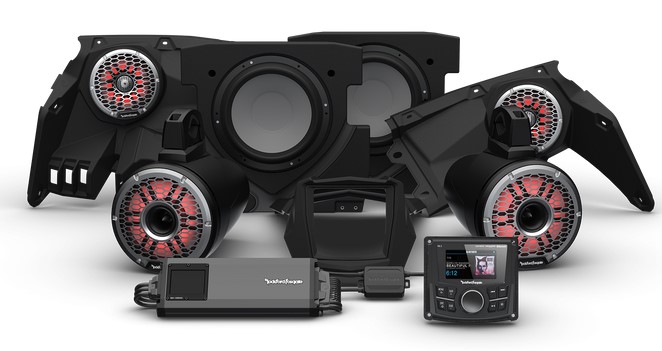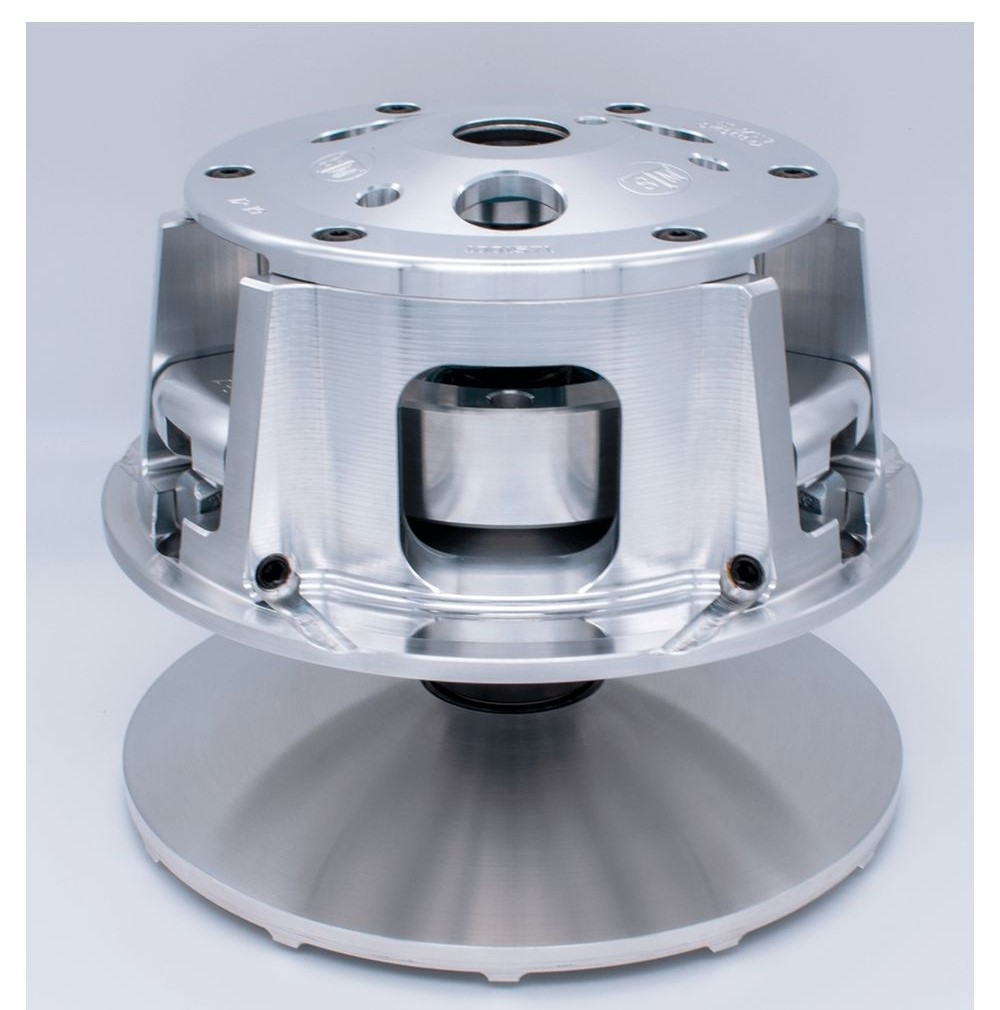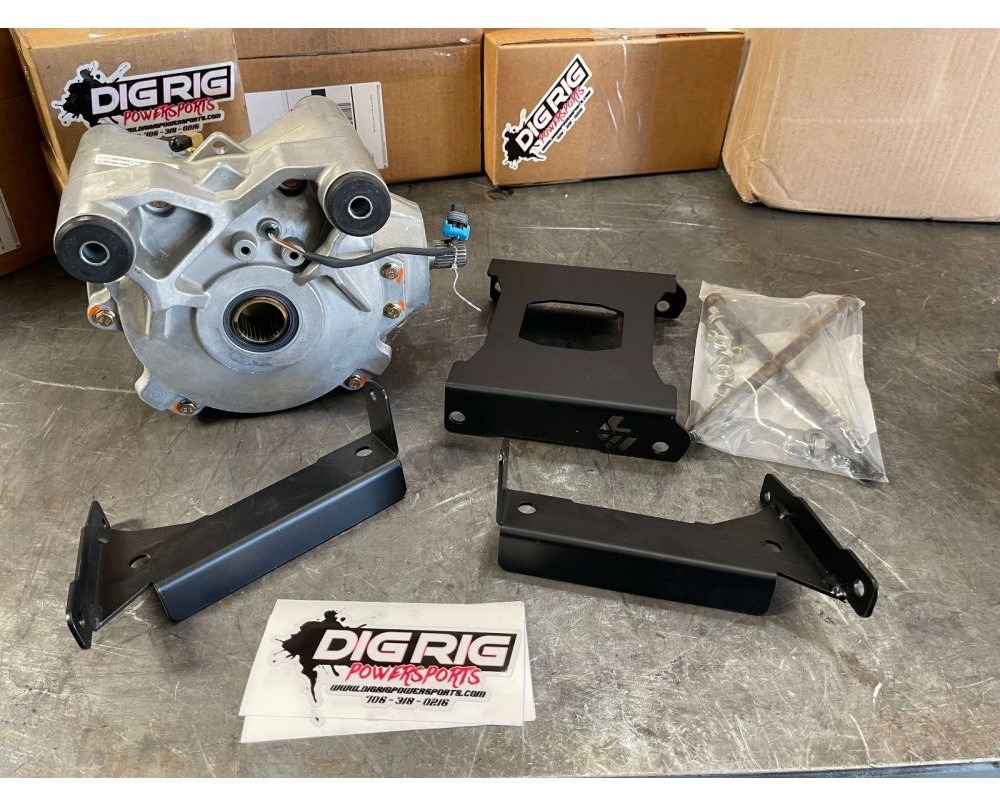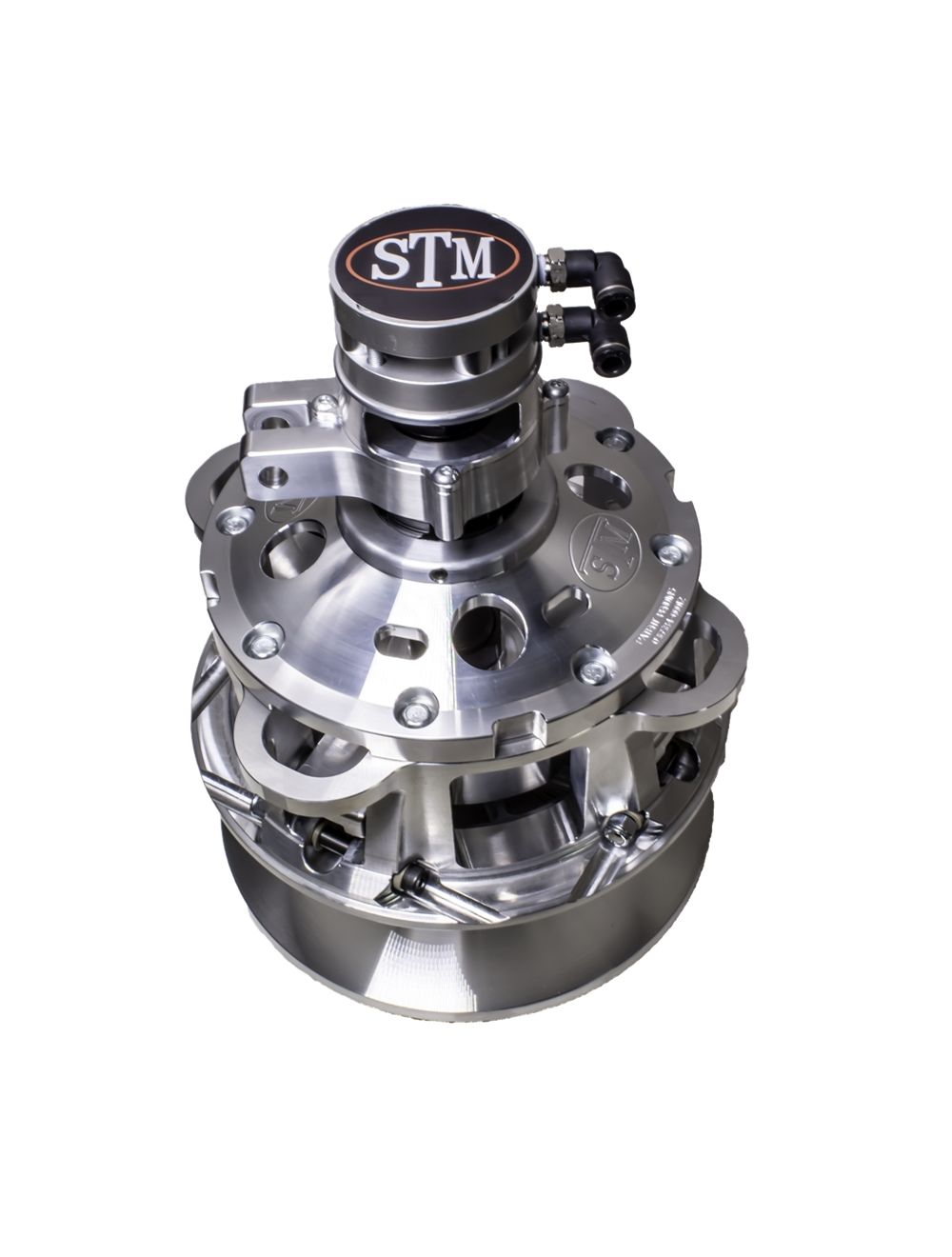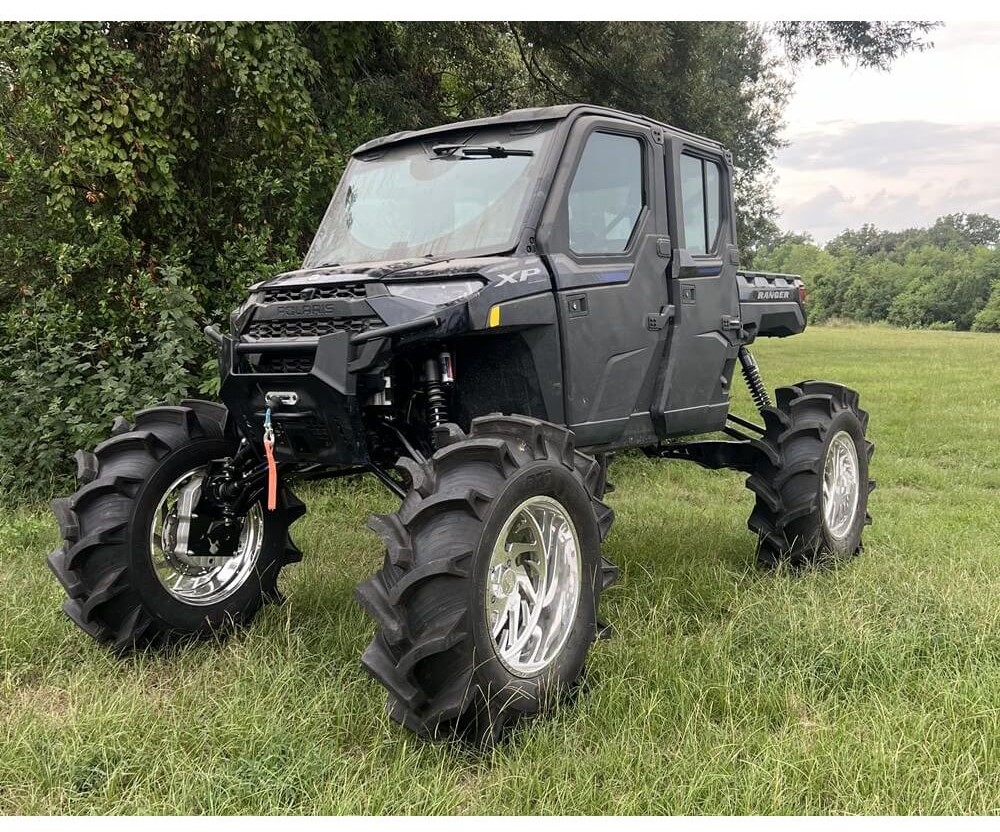ATV and UTV
-
October 14, 2025
If you’ve spent any real time behind the wheel of a Can-Am Maverick X3, you know that these machines are absolute beasts, until a clutch issue cuts the fun short. Whether you’re bombing across the dunes, crawling over rocks, or powering through muddy trails, your Can-Am X3 clutch kit is the heart of your UTV’s performance. But here’s the truth, clutch kits aren’t “install it and forget it” parts. Belt slip, heat build-up, poor backshift, and incorrect helix or spring choices can all tank your ride’s power and reliability.
This guide breaks down the most common Can-Am X3 clutch kit problems, explains how to fix them, and shares pro-level tuning tips so you can ride harder, longer, and with fewer breakdowns.
Understanding Can-Am X3 Clutch Kit Fundamentals
Before you can fix problems, you need to understand what’s going on under the hood, or in this case, under the clutch cover.
How X3 Clutch Systems Work
The Can-Am X3 uses a CVT (Continuously Variable Transmission) with a primary and secondary clutch. The Can-Am X3 clutch kit modifies how these clutches engage, shift, and backshift based on your RPMs and load. The primary clutch controls belt grip and engagement, while the secondary clutch manages belt tension and backshifting. Together, they keep your engine in its powerband whether you’re blasting at high speed or crawling over obstacles.
Common
-
October 14, 2025
When you’re tearing across open dunes or picking your way through muddy trails, the right soundtrack can make the adventure unforgettable. For Can-Am X3 owners, that often means upgrading to a Can-Am X3 subwoofer box for deep, powerful bass that cuts through engine noise and wind.
However, adding a subwoofer to your X3 isn’t as simple as bolting it in place. The process comes with unique challenges that require careful planning. You’ll need to consider X3 sub box under-seat fitment, which varies between 2-seat and 4-seat models, making measurements and clearance checks essential.
Then there’s the matter of protection. Riding in wet or muddy conditions increases the risk of water intrusion, so proper sealing and X3 subwoofer water protection become crucial for longevity and performance. Finally, hot summer rides can push your amplifier to the limit, making amp placement and cooling strategies essential to prevent thermal shutdowns.
This guide covers it all, fitment, waterproofing, amp cooling, and expert tips, so you can enjoy thundering bass without compromising reliability on any terrain.
Understanding Can-Am X3 Subwoofer Box Options
Before you break out the tools, it’s worth understanding why not all Can-Am X3 subwoofer box options are created equal. Factory audio leaves a lot to be desired, especially for riders who crave deep, clean bass at higher volumes.
-
October 13, 2025
When Polaris owners start looking for ways to toughen up their rides for serious trail abuse, one upgrade comes up in almost every garage conversation—the RS1 front diff conversion kit. This isn’t some flashy add-on you buy just for looks. It’s the fix for broken XP differentials, the upgrade that puts durability back on your side, and the smart move if you want Turbo-S level confidence in your RZR. Think of it as a game-changer for riders who keep blowing stock parts and are tired of spending more time wrenching than riding.
But here’s the real question: is it worth it? Riders want to know if the RS1 can truly outlast built XP diffs, how gnarly the installation really gets, and whether the final price tag delivers long-term value. That’s where this guide comes in. From RS1 differential skid plate trimming and tricky bracket alignment to wiring tweaks and cost breakdowns, we’re unpacking the RS1 front diff conversion kit in a way every rider can relate to, straight talk, no fluff.
Understanding RS1 Front Differential Conversion Benefits
Upgrading to an RS1 front diff conversion kit gives you a stronger, smarter drivetrain built to handle serious abuse. The RS1 differential was designed for a single-seat RZR that demanded instant throttle response, heavy loads, and more reliable engagement. Swapping it into an XP chassis is one of the smartest RS1 diff conversion benefits riders can grab.
RS1/Turbo-S Diff vs Built XP Diff Durability Comparison
-
October 13, 2025
If you’re serious about pushing your UTV to new heights, literally, the Dirty T Fab UTV lift is a game-changer. Whether you’re cruising desert flats, conquering rocky climbs, or floating over deep mud, this lift system delivers the clearance, suspension travel, and off-road geometry you need. But it’s more than just bolting on bigger parts. With a Dirty T Offroad lift kit, you’re working with advanced engineering designed for extreme use, which means installation, setup, and maintenance all require attention to detail.
This guide breaks down everything, UTV trailing arm conversion options, the realities of a Dirty T Fab 6-inch lift, managing UTV lift CV angles, keeping your Dirty T bed dump function smooth, ball-joint-delete compatibility, ride quality tweaks, and long-term upkeep, so you get maximum performance without sacrificing reliability.
Understanding Dirty T Fab UTV Lift Systems
Before diving into install tips and geometry changes, it’s important to understand what sets Dirty T apart from generic kits.
What Makes Dirty T Fab Different
- Precision Engineering: Every Dirty T Fab UTV lift is designed with off-road abuse in mind, reducing premature wear.
- Full Suspension Integration: Works seamlessly
-
October 13, 2025
For Can-Am riders chasing more power, smoother engagement, and real control over how their UTV handles big tires and tunes, the STM clutch Can-Am system is a serious game-changer. Unlike stock setups, STM clutches allow riders to fine-tune weights, springs, and helix combinations to match their build perfectly. But along with performance comes a reputation for STM clutch tuning complexity, extra maintenance, and higher ownership costs. That leaves many riders wondering, are the gains worth it?
This guide breaks down the differences between STM and OEM systems, explains tuning and maintenance, highlights STM clutch real-world gains, and even covers common problems. Whether you’re considering oversized tires, running a big tune, or simply want better durability, the STM clutch Can-Am upgrade deserves a closer look.
Understanding STM Clutch Technology for Can-Am UTVs
When riders start looking for more control, smoother engagement, and the ability to push their machines harder, the STM clutch Can-Am system comes into play. These clutches aren’t just stronger, they’re engineered with adjustability in mind. That adjustability lets riders fine-tune how power is delivered depending on terrain, tire size, load, and horsepower. Whether you’re crawling rocky trails, running oversized mud tires, or blasting dunes with a tuned engine, an STM setup gives you the flexibility to make your machine respond the way you want.
-
October 10, 2025
If you own a 2013–2015 Can-Am Maverick 1000, you already know it’s a powerhouse. But even this beast can be a little temperamental when it comes to clutch performance. Over time, many riders notice issues like surging RPMs at mid-throttle, jerky take-offs, or uneven power delivery. These aren’t just small quirks; they’re common signs of Can-Am Maverick 1000 clutch kit problems. Two of the biggest complaints are RPM hunting and harsh engagement, both of which can make your ride less enjoyable and even cause extra wear on your machine. The good news? These problems can be fixed with the right setup and maintenance.
In this guide, we’ll explain what causes these issues, how to solve them, and how to choose the perfect clutch kit for your riding style: whether you stick to trails, tackle deep mud, or ride in a mix of conditions.
Understanding Can-Am Maverick 1000 Clutch Issues
The original Mavericks are known for raw power, but their clutch systems need the right setup to transfer that power smoothly. Without proper tuning, you can end up with erratic engagement, belt wear, or performance loss.
Common Problems in 2013–2015 Models
Early models often suffer from:
-
September 09, 2025
If you're the kind of UTV rider who believes “stock is just a starting point,” then chances are you've come across the ball joint delete Can-Am Defender buzz. Whether you’re crawling through the mud, hauling gear, or bombing through rugged backwoods trails, your front-end setup takes a serious beating. And those factory ball joints? They’re often the first to throw in the towel. That’s where the ball joint delete Can-Am Defender upgrade steps in. This mod swaps out your vulnerable OEM joints for a beefier, more robust alternative, and riders everywhere are talking about it. But is it all good news? Let’s break it down, so you know what you’re getting into before wrenching.
What Is a Ball Joint Delete?
A ball joint delete Can-Am Defender is exactly what it sounds like, removing the factory-installed ball joints and replacing them with a Defender uniball conversion or similar heavy-duty component. Traditional ball joints are flexible connectors that allow for smooth articulation between the A-arms and knuckle. The trouble is, they’re also a high-failure point on most UTVs.
The ball joint delete replaces that weak link with a uniball or heim-style joint, usually supported by a reinforced A-arm and knuckle system. This style of upgrade is built for UTV front suspension mods that prioritize durability, simplicity, and raw toughness over the comfort of factory suspension geometry.
Why Consider One for Your Defender?
-
September 08, 2025
When you’re ripping through trails, climbing rocks, or blasting through mud, your Pro XP trailing arms are taking a lot more abuse than you might think. These rear suspension components are the link between your hub assembly and the chassis, meaning they control wheel position, help manage Pro XP suspension geometry, and absorb a fair amount of the impacts that your shocks don’t catch. Get them right, and your Pro XP rear suspension will feel smooth, stable, and predictable. Let them wear out, bend, or crack, and you’re in for sloppy handling, uneven tire wear, and possibly a ride-ending failure.
Why Trailing Arms Matter
In a Polaris RZR setup, trailing arms do more than just hold your wheels in place. They:
- Keep the rear wheels aligned under load and during suspension travel.
- Work with the shocks to manage weight transfer and Pro XP suspension upgrades.
- Maintain critical alignment settings like toe and camber.
- Strong, well-designed trailing arms — especially high-clearance trailing arms — also give you more room to clear rocks, stumps, and ruts without dragging the rear end.
Learn more about UTV trailing arm design from industry experts.
Common Issues Riders
-
September 05, 2025
If you’ve just dropped serious cash on an RZR Pro XP Stage 3 audio kit, you expect it to rock your rides, not drive you crazy with installation quirks. This upgrade promises deep bass, clear highs, and trail-shaking volume, but it’s not always plug-and-play bliss. Between tight RZR speaker box fitment, power demands, and occasional RZR amp overheating, things can get tricky fast. In this guide, we’ll walk through the most common RZR Pro XP Stage 3 issues, share real-world troubleshooting tips, and give you smart UTV audio installation practices to keep your sound system thumping without draining your battery. Whether you’re planning a Polaris RZR audio upgrade or already knee-deep in wires, this is your go-to resource.
What Stage 3 Includes
A RZR Pro XP Stage 3 audio kit is a big step up from stock. Most packages include:
- Stage 3 sound system RZR components (front & rear speakers, subwoofer, and amp)
- RZR subwoofer upgrade for punchy low-end sound
- RZR Stage 3 wiring harnesses for clean connections
- Pro XP sound system controller with Bluetooth capability
- Weather-resistant housings for waterproof UTV audio durability
-
September 04, 2025
If you ride a Polaris RZR Pro XP and dream of squeezing in bigger tires without wrecking your ride quality, RZR Pro XP 2" forward A-arms are a proven solution. These upgraded arms move your front wheels forward by two inches, giving you better clearance, more stability, and the ability to run serious Polaris RZR big tire mods without constant rubbing.
Whether you’re building a mud monster, desert racer, or trail crusher, understanding how these arms affect your RZR Pro XP geometry, steering, and alignment will help you get the most out of your Pro XP A-arm upgrade
What 2" Forward A-Arms Do for Your RZR
Stock arms limit tire size and approach angle. Swapping them for Polaris RZR forward offset arms changes the game.
Benefits of this upgrade:
- Bigger Tires Without Rub: Perfect for RZR tire fitment up to 35” depending on your setup.
- Better Approach Angles: Less chance of smashing the frame on rocks or ledges.
- Improved Stability: A touch more wheelbase adds forward offset stability at higher speeds.
- RZR Mud Clearance Gains: Pair them with a lift for even more obstacle clearance.
And here’s the science bit — moving the wheels forward changes your Pro XP steering feel because it tweaks the caster angle. A little more caster generally means better tracking at high speed but can make low-speed turns feel heavier.

